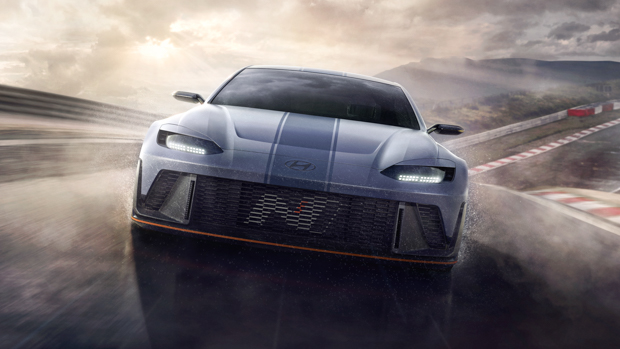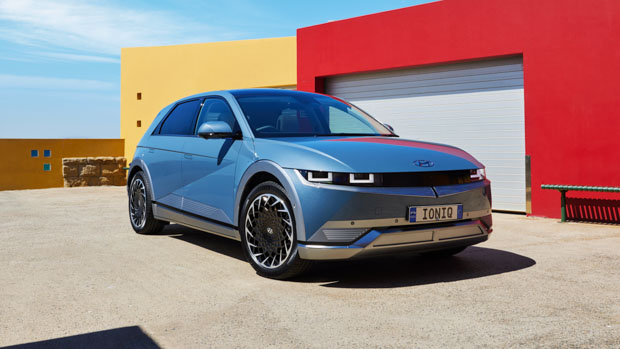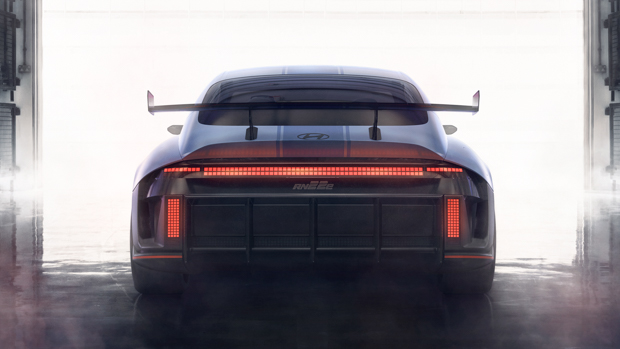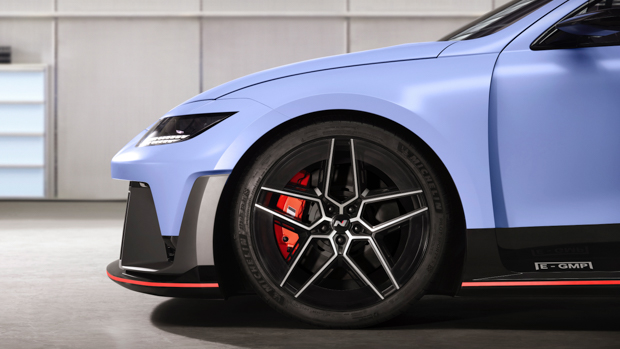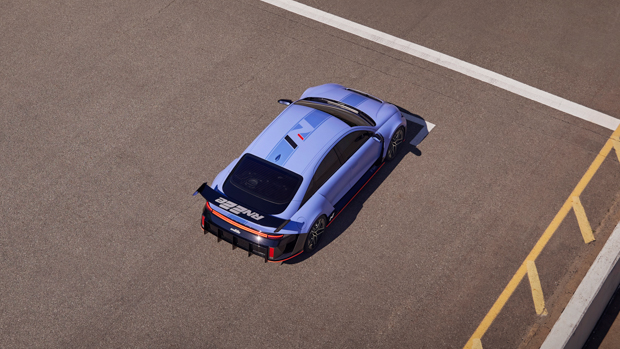-
Car Reviews
- Car News
-
Car Comparisons
Latest comparisons
- Chasing Deals
With 430kW, a twin-clutch rear differential and an a driving vibration actuator, the RN22e prototype shows N’s electrified direction
Hyundai’s N division will adopt fully-electric powertrains next year – with the brand revealing its RN22e “rolling lab” prototype based on the new Ioniq 6 sedan – and the fact that Hyundai will launch a fully-fledged Ioniq 5 N model in 2023.
Hyundai N and motorsport boss Till Wartenberg said that the N sub-brand will pivot to setting “new standards in sustainable high performance”.
While the Ioniq 5 N has been confirmed for production in 2023, Hyundai’s first all-electric N production vehicle hasn’t yet been seen – and specifications aren’t yet known.
Instead, the company has released detailed information on the RN22e “rolling lab” prototype that undoubtedly will inform the final version of the Ioniq 5 N – with a Ioniq 6 N super-sedan likely to follow.
Hyundai’s rolling labs are prototype vehicles that are used as a springboard for future technologies set for production.
“Rolling labs represent the continuous development of our most advanced technologies … [they empower] us to push ourselves to the limit,” said Thomas Schemera, Hyundai’s head of customer experience.
Schemera said that the RN22e was a key part of the “strategic development of [Hyundai’s] entire product lineup, especially…electrified, high-performance vehicles.”
While the RN22e rolling lab uses the body of the recently-revealed Ioniq 6 sedan – rather than the shape of the Ioniq 5 that will actually be the first Hyundai EV to get a full-fat N model – the four-door prototype strongly hints at final specs for the Ioniq 5 N.
Like other N vehicles, Hyundai says the RN22e is designed to be genuinely capable of track use, with a frank admission in a release that the car has to be engineered to deal with the “inevitably higher weight” inherent to battery EVs.
The dual-motor all-wheel drive (AWD) version of the Hyundai Ioniq 5 weighs 2100kg, while N division’s first model – the petrol-powered i30 N hot hatch – is 600kg lighter.
As a result, the RN22e gets a considerably more serious braking setup, with four-piston monoblock callipers and 400mm hybrid discs designed to “allow RN22e to withstand the weight of its power-electric system.”
Those brakes should be more powerful than the 380mm (front) and 360mm (rear) ventilated disc setup fitted to the Kia EV6 GT – until this point the most powerful vehicle to utilise the Hyundai group’s e-GMP electric vehicle platform.
The RN22e shares its 77.4kWh battery and dual motors with AWD versions of the Ioniq 5, new Ioniq 6 and the Kia EV6 – including the high-performance GT version of the Kia which is set to launch in Australia by early 2023.
Outputs for the RN22e are a perfect match for those made by the EV6 GT: 430kW of power and 740Nm of torque, distributed via a single-speed automatic transmission. While the EV6 GT is said to be capable of a 260km/h top speed, the RN22e’s maximum velocity is listed as “over 250km/h” for now.
Like the EV6 GT, the RN22e is assisted by an e-LSD in the form of a twin-clutch differential on the more powerful rear motor, allowing torque to be prioritised to an outside wheel. It’s not yet known if the e-LSD hardware is the same in the Kia and the Hyundai.
Hyundai says the inclusion of an e-LSD system was important for preserving the ‘corner carving’ attribute of its N cars, which have benefitted from standard fitment of a limited slip differential in Australia since the launch of the i30 N in 2018.
The RN22e includes two features designed to let the driver better perceive the performance of the car: an N Sound+ audio generator that plays both inside and outside the vehicle while driving, and “N e-shift” which generates artificial vibrations and the feel of transmission shifts while accelerating.
Latest news
About Chasing cars
Chasing Cars reviews are 100% independent.
Because we are powered by Budget Direct Insurance, we don’t receive advertising or sales revenue from car manufacturers.
We’re truly independent – giving you Australia’s best car reviews.
